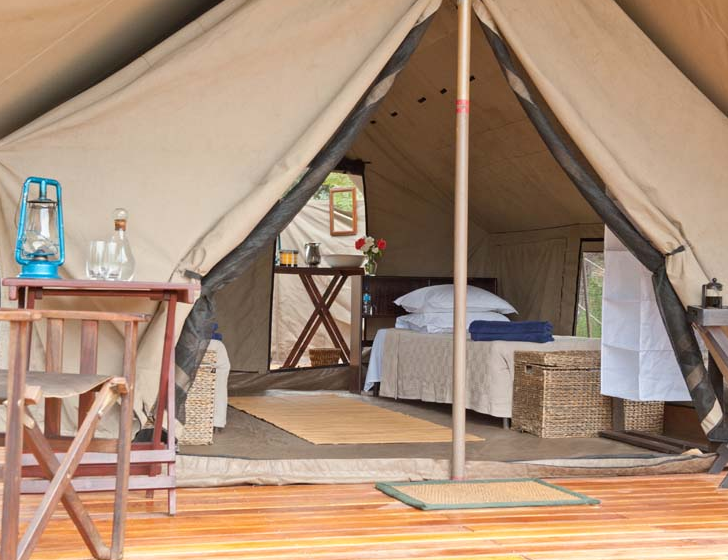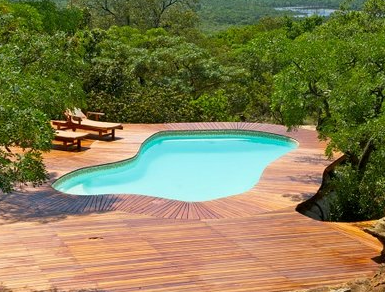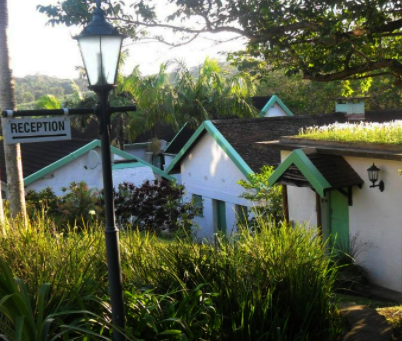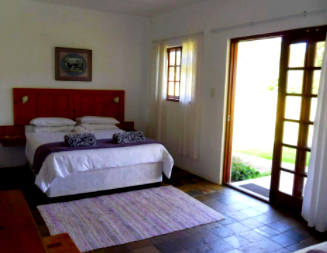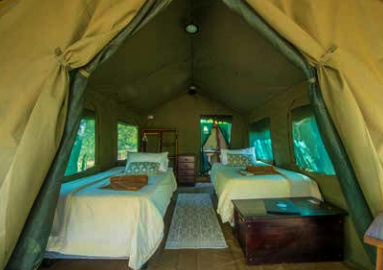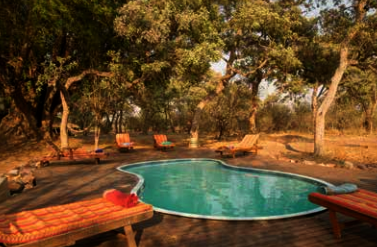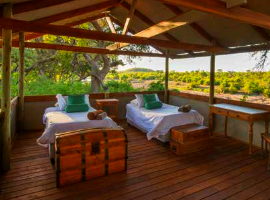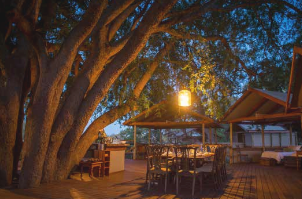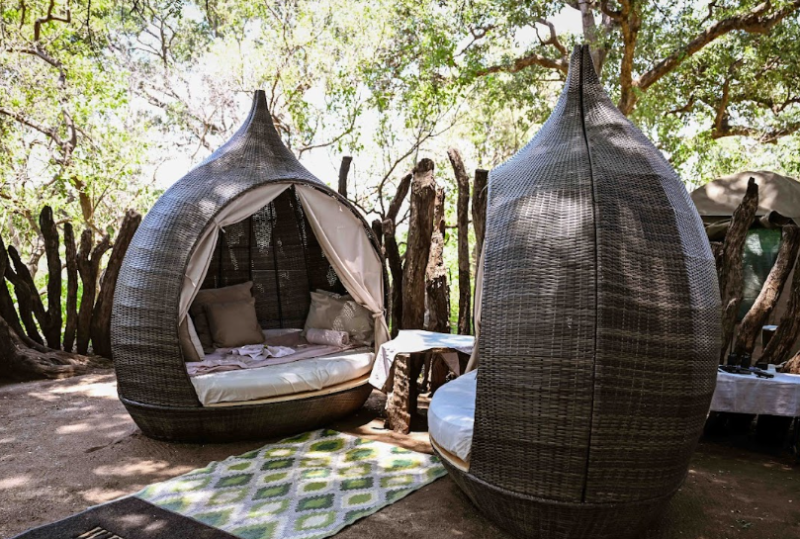100 € discount for registrations received before 15/01 !
- Excellent value for this horse safari
- One of the most varied safaris, between South Africa and Botswana
- Encounters with elephants and often lions, leopards, ...
- Accommodation in elegant and typical camps
- Return transfer to Johannesburg by plane taxi
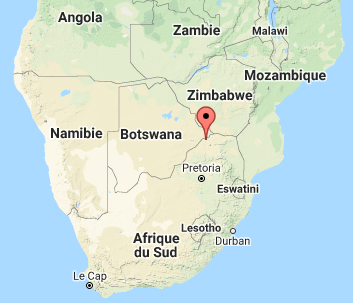
This horsebak riding safari allows you to discover two South African countries: South Africa and Botswana. You will travel through the African bush and its magnificent wild fauna, and you will also be able to learn more about the rich history of these countries. You will be accommodated in tents on the ridges overlooking the grassy valleys. The tents are equipped with beds with sheets and duvets. Each tent has a shower with buckets. The second half of your horse safari takes you north of the Limpopo Valley in the Tuli Block region of Botswana. The trails here allow you to discover the bush and the famous Tuli sandstone formations. The region is famous for its elephants, but you will also discover impalas, girafes, hyenas, lions, leopards and wild dogs. At Limpopo you stay at Two Camp Mashatus, a semi-permanent tent camp.
HORSEBACK SAFARIS
SEE ALL OUR OFFER: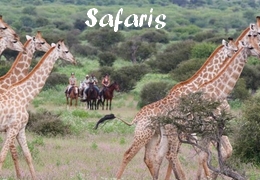
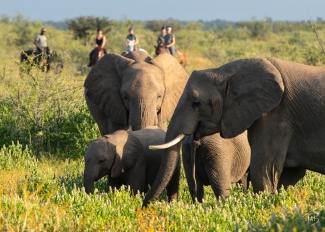
BOTSWANA & SOUTH AFRICA HORSE RIDING SAFARI
INDICATIVE ITINERARIES:
Version 4 nights in South Africa / 3 nights in Botswana:
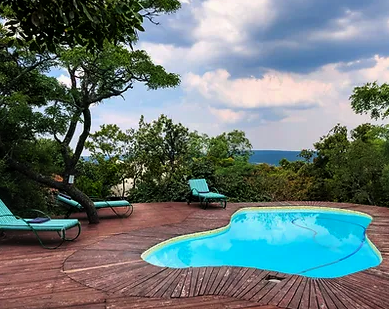 Day 1 - Friday: Arrival. Meet at ORTambo at 9:30 am and transfer to Camp Davidson in time for a late Lunch. That afternoon you will be introduced to your safari horse. We will ensure that you are matched to a horse that suits your ability and experience before heading off on your ride. This first introductory ride is a relaxed affair, giving riders the opportunity to settle into their new surroundings. Crossing the plains, enjoy your first close encounter with wildlife on horseback. A stunning lookout spot for sundower drinks is a welcome moment to take in your first taste of Africa after a long journey. A three course supper is served at Camp Davidson that evening.
Day 1 - Friday: Arrival. Meet at ORTambo at 9:30 am and transfer to Camp Davidson in time for a late Lunch. That afternoon you will be introduced to your safari horse. We will ensure that you are matched to a horse that suits your ability and experience before heading off on your ride. This first introductory ride is a relaxed affair, giving riders the opportunity to settle into their new surroundings. Crossing the plains, enjoy your first close encounter with wildlife on horseback. A stunning lookout spot for sundower drinks is a welcome moment to take in your first taste of Africa after a long journey. A three course supper is served at Camp Davidson that evening.
Day 2 - Saturday: Today’s ride sets off from the high country overlooking a beautiful wilderness area to the east, and heads south, winding along the banks of Sunset Lake with its resident pod of hippos and the odd sly crocodile, followed by a visit to one of the Horizon dams for a swim with the horses before getting back to camp in time for lunch. Guests can then relax by the pool, before a shorter afternoon ride. NB Those guests not fully vaccinated (including booster if overdue) will be taken for a PCR test during the lunch break (additional cost R1450 pp). Overnight at Camp Davidson
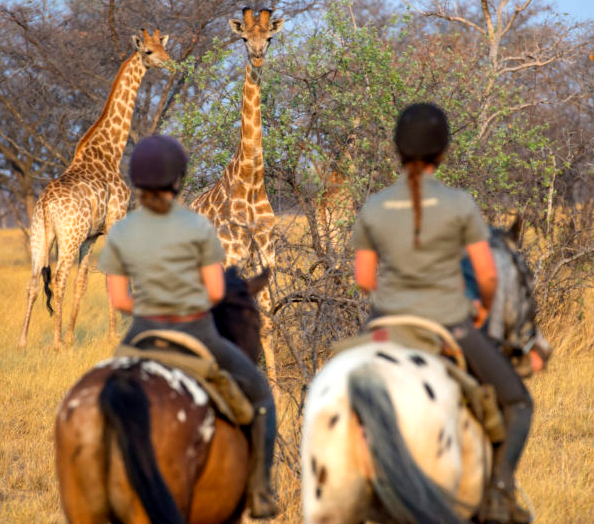 Day 3 - Sunday: This ride heads south to the Game Conservancy which is home to the Bellevue Lodges. The ride traverses a wide wetland, home to reedbuck and grass owls, before entering dense woodland dotted with wild fig trees and large fruited bushwillows. Here it crosses the watershed and descends through open grasslands with sweeping views to the upper reaches of the Conservancy’s main water system. The route passes the favoured habitat of waterbuck and Cape buffalo. The open plains that follow are aptly known as “Little Serengeti”; large herds of blesbuck, eland, wildebeest and kudu are all on view, as are groups of elegant sable, swift red hartebeest and impressive journeys of giraffe and Cape buffalo. After a lunch at the lodge and a rest by the pool, the afternoon ride continues to explore this game rich area, closing with sundowners overlooking the African plains. Overnight at Bellevue lodges.
Day 3 - Sunday: This ride heads south to the Game Conservancy which is home to the Bellevue Lodges. The ride traverses a wide wetland, home to reedbuck and grass owls, before entering dense woodland dotted with wild fig trees and large fruited bushwillows. Here it crosses the watershed and descends through open grasslands with sweeping views to the upper reaches of the Conservancy’s main water system. The route passes the favoured habitat of waterbuck and Cape buffalo. The open plains that follow are aptly known as “Little Serengeti”; large herds of blesbuck, eland, wildebeest and kudu are all on view, as are groups of elegant sable, swift red hartebeest and impressive journeys of giraffe and Cape buffalo. After a lunch at the lodge and a rest by the pool, the afternoon ride continues to explore this game rich area, closing with sundowners overlooking the African plains. Overnight at Bellevue lodges.
Day 4 - Monday: A morning ride in search of buffalo before returning to the lodge for lunch and a chance to relax and enjoy this fabulous setting before riding back to the Horizon lodge where we say our goodbye to our horses before heading up to camp for a last night at Camp Davidson.
Day 5 - Tuesday: Wake up early and depart the camp by 6 am with a picnic for the road, our aim is to leave Botswana and have you through the border by 9am, aiming to arrive at Mashatu by 1 pm, in time for lunch and a chance to change before the afternoon ride to Tree Camp, Dinner and night at the unique Tree Camp.
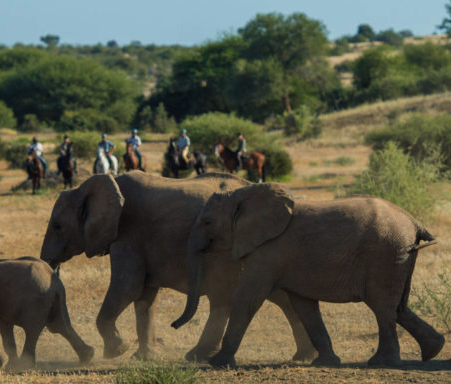 Day 6 - Wednesay: A morning ride from Tree Camp exploring the center of the reserve and the game rich Pitsane river area, before arriving at Two Mashatus for lunch and a chance to relax by the pool. That afternoon there is the option of another ride or a game drive in the Kgotla area with sundowners on the Mmagwa hills. Overnight at Two Mashatus Camp.
Day 6 - Wednesay: A morning ride from Tree Camp exploring the center of the reserve and the game rich Pitsane river area, before arriving at Two Mashatus for lunch and a chance to relax by the pool. That afternoon there is the option of another ride or a game drive in the Kgotla area with sundowners on the Mmagwa hills. Overnight at Two Mashatus Camp.
Day 7 - Thursday: You depart for a morning game drive from Two Mashatu from Two Mashatu. In the afternoon, you have the option of a bush horse or bush walk or, if available, a game drive with Mashatu with a good chance of seeing the big cats (additional cost of 65$ per person), then return to Two Mashatus for your last night in Africa. Overnight at Two Mashatus camp.
Day 8: Departure. A good long morning ride from Two Mashatus ending back at the stables in time for lunch and a shower before flying out of Mashatu at 2:30 pm.
Version 3 nights in South Africa / 4 nights in Botswana:
Day 1 - Tuesday: Arrival at Camp Davidson
You will be met at OR Tambo Airport in South Africa and transferred directly to Camp Davidson in the Waterberg, where you will enjoy a light lunch overlooking the vast Waterberg Plateau. A safety briefing and introduction to the horses will follow. The horses are primarily Boerperds, along with a mix of Warmbloods, Appaloosas, and Friesians. The first ride is a gentle introduction to the reserve and an excellent opportunity for first-time encounters with species such as zebras, giraffes, wildebeest, and kudu. The ride progresses from a walk to an easy canter on sandy tracks and concludes with a sunset aperitif on the plains.
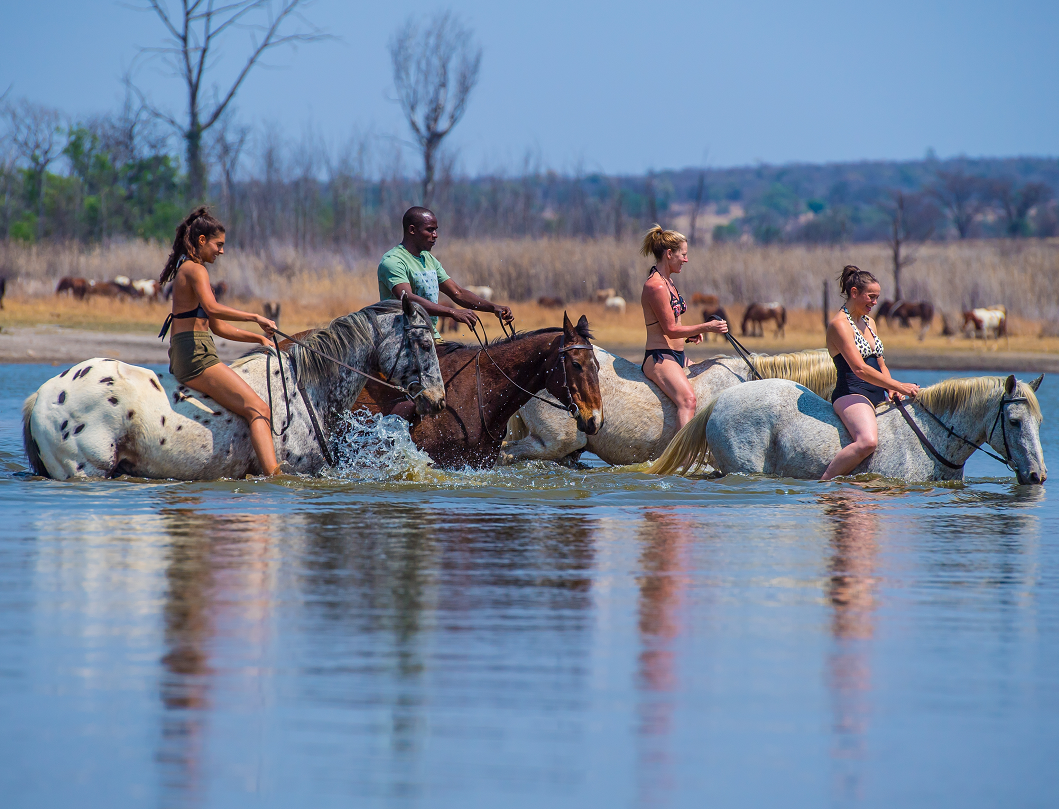 Day 2 - Wednesday: Open plains, swimming with horses, and game galore.
Day 2 - Wednesday: Open plains, swimming with horses, and game galore.
This morning's drive is usually quite brisk. The route follows the center of an open valley that is home to species such as sable, reedbuck, red hartebeest, waterbuck, and impala. The sandy tracks are excellent, and the route crosses open grasslands and dense woodlands. Dark red cattle raised on the property are often seen along this route. When conditions permit, the final stretch of the ride includes exhilarating gallops along the edge of the lake adjacent to Horizon Lodge. It's a great experience, but don't expect to stay dry! The afternoon ride passes a series of dams where encounters with hippos are likely and then returns across the open plains. At this time of day, there is often a lot of activity on the plains, with herds mingling in the soft sunlight and different groups coming and going, preparing for the night. It's a truly magical experience to be able to ride so close to these wild animals, completely relaxed in the presence of the horses.
Day 3 - Thursday: Ride to Bellevue Lodge and Buffalo Search.
An early start is necessary for the long drive from Camp Davidson to Savannah Lodge, in the far southwest of the reserve, or Seringa Lodge, in the southeast. The first part of the ride covers country that the riders are now somewhat familiar with, but soon enters new terrain. In places, the bush is dense, but after a while, the landscape opens up to grasslands offering panoramic views to the south and west. Riding through this landscape gives riders a sense of the vastness of the African plains. The area supports a very high concentration of game, with herds of over 300 blesbuck, or 80 eland, often seen. Other species that inhabit the plains include the red hartebeest, the tsessebe, and the ostrich. There are numerous zebras, wildebeest, impalas, and giraffes, as well as small groups of zebras, roans, and waterbucks. The final stretch to Savannah Lodge runs alongside a wooded stream where kudus and bushbucks are likely to be spotted. After some relaxation by the pool and within the sophisticated lodges, it's time to ride into the southernmost areas of the reserve in search of Cape buffalo. These areas are part of Africa's famous "Big Five" and live up to their formidable reputation, so riders must be alert and responsive to the guides' instructions. This region is known for its spectacular sunsets as the sun dips below the distant headlands of the Waterberg Escarpment – a fitting end to an eventful and memorable day in the African wilderness.
 Day 4 - Friday: Return to Bellevue and road transfer to Botswana.
Day 4 - Friday: Return to Bellevue and road transfer to Botswana.
After an early start, another long ride through game-rich country brings riders back to the heart of the safari: Horizon Lodge. The route differs from the outward journey, transforming this part of the safari into an exciting trek through diverse landscapes and ecosystems. Game species generally prefer different habitats, with nyala and bushbuck, for example, occupying dense sections of the reserve, while hartebeest and hartebeest remain on the open plains, and waterbuck and reedbuck, unsurprisingly, are usually seen near streams and other waterways. The route offers excellent opportunities to spot giraffes, which is always a highlight. At Horizon Lodge, you embark on the road transfer to the Mashatu Game Reserve in Botswana. Afternoon: After crossing the mighty Limpopo River, riders are welcomed at Horizon Horseback Mashatu Stables where they enjoy a light lunch, receive a safety briefing, and meet their horses.
The afternoon ride takes them from the stables to Tree Camp. The route typically offers rich encounters with elephants, waterbuck, giraffes, impalas, wildebeest, and zebras. Signs of the many predators that inhabit these rich river environments are plentiful, and chance encounters are possible. The ride usually takes about two hours, and riders begin to forge a real bond with their individual mounts. The trappings of modern life begin to fade as the sense of adventure and travel deepens. Tree Camp is a truly magnificent place where one is enveloped by the exceptional qualities of the African wilderness.
 Day 5 - Saturday: Elephant Valley – Tree Camp in Kgotla
Day 5 - Saturday: Elephant Valley – Tree Camp in Kgotla
Waking up at Tree Camp is a magical experience. You feel completely immersed in nature, surrounded by birdsong and experiencing the new day as the early morning light filters through the tree leaves. After a quick breakfast, the riders embark on the first long trek of the trip: climbing to the edge of the mini-escarpment, then descending through Elephant Valley and heading towards the distant sandstone citadels guarding the Limpopo and Motloutse Rivers. The first part of the journey should not be rushed, as the horses meander along well-defined elephant trails, past giant baobab trees and the occasional shallow watering hole. Soon, however, the countryside opens up and the horses can begin to stretch their legs on soft ground leading to the upper reaches of a stream that flows from the ridge down to the Limpopo. This is elephant country par excellence, and the guides are always on high alert, using all their keen senses. Once the trail leaves the river, the terrain opens up again, and the pace quickens. A second river is then reached, leading directly to the veterinary checkpoint on the main road through the Mashatu Game Reserve. The route then follows the road briefly before crossing flat country towards the intriguing Sacred Rock massif. Here, the mopane vegetation is short, and it's possible to cross the plain quite quickly and safely. Large herds of zebra, wildebeest, and impala inhabit this area. The guides mark their route using mashatu, leadwood, and apple trees as landmarks. Soon, the riders reach the old leadwood enclosure (once used as a traditional village court in Botswana) known as "Kgotla." This open-air enclosure provides the perfect and secure campsite for the night. The camp is not far from the banks of the Motloutse River, and with high concentrations of game living along the river's fertile floodplain, the area is home to large prides of lions and clans of hyenas. The sounds of these predators at night provide unforgettable memories! In the afternoon, we search for the area's resident lion on a game drive and conclude the day's adventures with an aperitif on the ancient rocks of "The Amphitheater." While sightings of big cats on horseback do occasionally occur, Horizon Horseback maintains a policy of keeping them at a distance. The best opportunities to approach lions, cheetahs, leopards, and spotted hyenas arise on game drives where the vehicle acts as a natural hide and is largely ignored by predators.
Back at the Kgotla, dinner is enjoyed around a large campfire. The night unfolds with a ceiling of stars and the African night melody to lull you to sleep; a rare experience that is about as far removed from urban life and the modern world as one can imagine.
Day 6 - Sunday: Today's stage is more relaxed and suitable for the group, as there's no need to reach another camp before nightfall. A particularly interesting route initially follows the Motloutse River, with stops at waterholes frequented by elephants to observe the comings and goings of the herds, before descending towards the impressive Solomon's Wall, a high dolomite dam breached by the river in ancient times. This is a favorite spot for troops of baboons, always fascinating to watch. The trail then follows the riverbanks, lined with giant mashatu and leadwood trees, towards the mighty Limpopo Valley. This region is renowned for its spectacular, shimmering sandstone rock formations and is home to eland, klipspringers, and kudu. Some of the oldest civilizations in southern Africa were established in this valley. The region's archaeological remains include Middle and Upper Paleolithic tools, rock art, and the legendary Mapungubwe dynasty. Mapungubwe means "Place of the Jackal" in Venda, and this dynasty reigned around 1220. Mapungubwe's ancient and timeless topography, combined with abundant wildlife, offers an unforgettable horseback riding experience. In the afternoon, a safari takes visitors to the foot of the impressive Mamagwa Massif, an isolated rock formation that served as a defensive position for British troops against Boer incursions from the Transvaal in the late 19th century. Traditionally, a sunset aperitif is enjoyed at the western end of the massif, with breathtaking views of the wild landscape as the sun slowly dips below the horizon. The return to Kgotla after dark offers excellent opportunities to spot lions, leopards, and hyenas.
Day 7 - Monday: River Trails – from Kgotla to Tree Camp
On this day, the journey turns northeast and follows a series of river trails back to the heart of the reserve. Life in this arid environment is still concentrated near water, and the drive promises sightings of elephants, zebras, giraffes, and wildebeest. The route crosses the watershed and then winds along old trails adjacent to a stream flowing north towards the Majali River. From these higher elevations, the sweeping views to the north reveal the true wildness of the Mashatu Game Reserve. The rest of the day is a mix of trekking on elephant trails and galloping across a relatively open mopane veld. The final stretch follows the Majali River itself, passing rock pools, cliffs, and ribbons of green grass. Encounters with baboons, kudus, klipspringers, and crocodiles are likely. Tree Camp is finally reached after a 4-5 hour drive.
That afternoon, guests will give their horses a well-deserved rest and participate in either a guided bush walk or, if the group prefers, a safari with the guides from the main camp at Mashatu. This opportunity, although offered at an additional cost, should not be missed, as the almost guaranteed sightings of lions and leopards, and sometimes cheetahs, are legendary. The guides know the structure and location of the various prides and individuals very well, and it is indeed very rare not to spot them.
Day 8 - Tuesday: After a quick breakfast, the riders embark on the final ride of the safari. This ride offers panoramic views to the east and south, bathed in the early morning light, as it follows the edge of a ridge near the center of the reserve. The trail then descends into a game-rich area along the Majali River. The river's deep pools are a favorite haunt of baboons and impalas. Sooner or later, large herds of elephants come to drink their daily drink, play in the water, and enjoy a dust bath.
The final part of the ride takes place across open plains with a few brisk canters back to the stables. Other notable sightings include the kori bustard, Africa's largest flying bird, the bat-eared fox, and the ostrich. Once at the stables, it's time for a shower and a meal by the great river, then a short drive to Limpopo Valley airfield for the flight to Johannesburg, South Africa.
* Please note that due to changes in weather and other unforeseen events, the itinerary and accommodation used may change at the last minute.
MEETING:
4-night South Africa / 3-night Botswana option:
Friday at Johannesburg Airport. Transfer by car to base camp. Approximately 3 hours drive.
Flights must arrive before 9:30 AM. Meet at 11:00 AM.
Please submit your flight times for confirmation before booking.
3-night South Africa / 4-night Botswana option:
Tuesday at Johannesburg Airport. Transfer by car to base camp. Approximately 3 hours drive.
Flights must arrive before 9:30 AM.
Please submit your flight times for confirmation before booking.
DEPARTURE:
4-night South Africa / 3-night Botswana option:
Friday. Transfer by plane to Johannesburg airport (arrival around 4:30 PM).
Flights from Johannesburg must depart after 8:00 PM.
Please submit your flight schedule for confirmation before booking.
3-night South Africa / 4-night Botswana option:
Tuesday. Transfer by plane to Johannesburg airport.
Flights from Johannesburg must depart after 8:00 PM.
Please submit your flight schedule for confirmation before booking.
FLIGHTS:
Flights from/to Johannesburg are not included in our prices because it is generally more interesting to book your flights yourself, an inclusive flights package is generally more expensive with agency commissions. However, we are at your disposal to help you find the best rates.
Before booking your flights: send us your schedules to check the consistency with the transfer schedules.
RIDING ABILITY: ![]()
You must be an experienced riders. You must ride regularly (at least once or twice a week) and be comfortable at posting trot, light seat canter and gallop, as well as being able to do small jumps should you have to. You must be able to control a horse independently of the group at all paces.
On the first afternoon ride in South Africa: there will be a short, simple riding test out in the bush. Guests will be asked to take part in a single file group canter. Then they will ride their horse away from the group between three points, varying the pace between a collected and an extended canter. The first exercise is to demonstrate that the rider is able to control their horse at an even pace within a group canter, without overtaking or allowing large gaps to develop within the group. The second is to demonstrate their ability to control their horse independently from the group. Those who fail, will not be allowed to ride in the group. They will be brought down to the lodge once a day for a shorter, slower ride, either on their own or with other riders of similar ability staying in the lodge. No financial compensation can be requested in this case.
RYTHM:
Horse paces are the walk for animal observation, fast between the observation zones. 4-6 hours per day on average (20-30 km per day).
AGE:
The usual minimum age is 16 but exceptions can be made for private groups or very competent riders. Riders under the age of 12 cannot be accepted.
GUIDES:
Guides leading the safari have many years’ experience and most have grown up in the area and know the bush like the back of their hand. Our guides have either professional or assistant guiding licenses with the Botswana Qualifications Authority. They are qualified to use firearms and qualified in first aid. All rides are conducted by two experienced professional guides. The lead guide is armed with a rifle and a bull whip. All management staff and guides do regular first aid training with a specialized doctor for remote areas. The lead guide has a local phone and a radio for use in emergencies.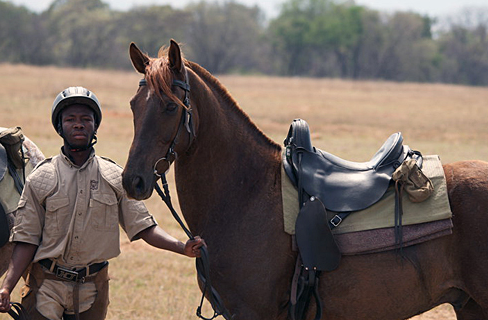 HORSES:
HORSES:
A herd of 96 horses in South Africa and 53 horses in Botswana. The herd is comprised of Boerperds, Throroughbreds, Warmbloods and Arab crosses. They range in size from 14.3hh to 17 hh. Their schooling generally concentrates on English style, although the horses neck rein when in the bush. They respond easily and lightly to the aids. All of the horses have been individually selected for their temperament and "ride-ability" on safari. They are from the various South African breeds, which are well known for being of a hardy nature and able to cope under extreme conditions. Horses have been hand selected for their endurance, courage and responsiveness. The philosophy has entailed managing horses as a free roaming herd within large tracts of natural pasture, rather than in stables or paddocks. Horses are at ease with each other and within their environment, which generates calm and contented natures.
TACK:
Saddles are South African McClellan’s, a cavalry saddle designed for long hours of riding, they offer particular comfort and airflow for the horses back and padded seats and fenders for the rider's comfort.
ACCOMMODATION:
Version 4 nights in South Africa / 3 nights in Botswana:
Nights are indicative: they may change depending on the dates & availability.
Nights 1,2,3: Camp Davidson (Afrique du Sud) - Night 4: Bellevue lodge (Afrique du Sud) - Nights 5 &6: Two Mashatus (Botswana) - Night 7: Tree Camp (Botswana) - Night 8: Horizon
Camp Davidson - South Africa :
A re-creation of the original Camp Davidson has been built high in the bushveld above the Matlapeng valley. It offers the opportunity to explore on horseback from a secure base camp nestled in the heart of the wooded mountains and commands a wonderful panoramic view of the central highlands of the Waterberg range, while overlooking the picturesque Sunset Lake at the eastern boundary of the ranch property. Stay in decked canvas tents nestled amongst the sandstone ridges overlooking grassy valleys. Each luxury tent has an en-suite bathroom. The camp is completely run on solar energy and has a small swimming pool.
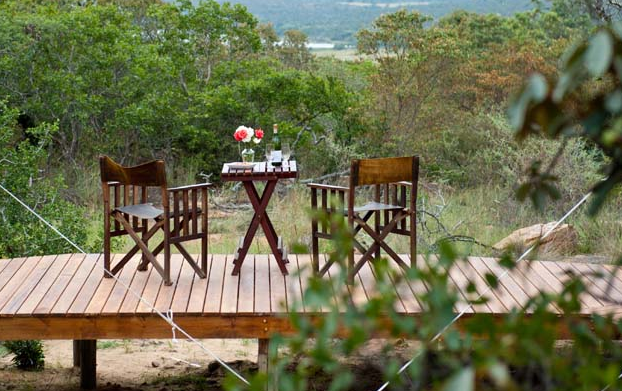
Bellevue Lodge - South Africa :
This luxury lodge is within a morning's ride from Camp Davidson and offers excellent riding and plenty of game. It is located on the south western side of the conservancy and is tastefully decorated lodge with 5 en-suite rooms. The lodge had a large comfortable living space and dining areas inside and outside.
There is a small pool and deck which overlooks a plain and watering hole close by, where wildlife can frequently be seen.
There are no Wi-Fi facilities at the lodge.
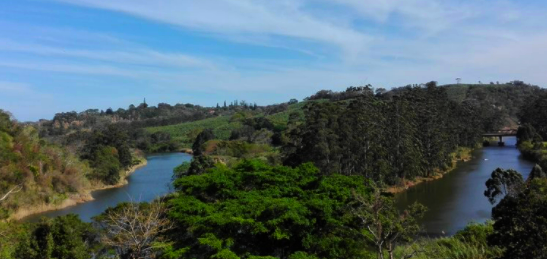
Two Mashatus Camp - Botswana :
Nestled in the shade of two large Mashatu trees, the heart of the camp has two traditionally built Lala Palm rondavels for dining and lounge areas.
Guest accommodation is in large A-frame walk-in tents set on teak platforms each with en-suite enviro drop toilet and hot water shower. Each tent is private and positioned in the shade of a tree in the bush, not far from the main area. Each tent has a small deck area in front where guests can relax privately during the afternoons.
Two Mashatus Camp also has a small swimming pool under a Mashatu tree for guests to enjoy.
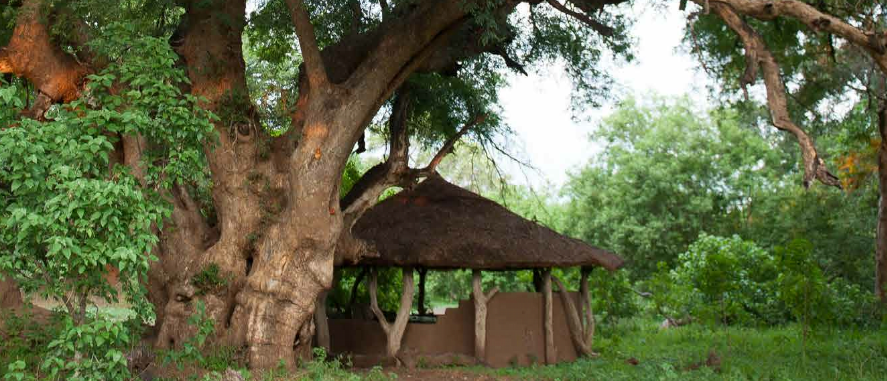
Tree Camp - Botswana :
A very special camp. You sleep in huts perched 4 meters above the ground in a giant Mashatu. Cabanes for 2 airy and fresh people. Shared showers and toilets. The spacious dining room and living room overlook the Majale River. This camp will truly provide you with unforgettable memories.
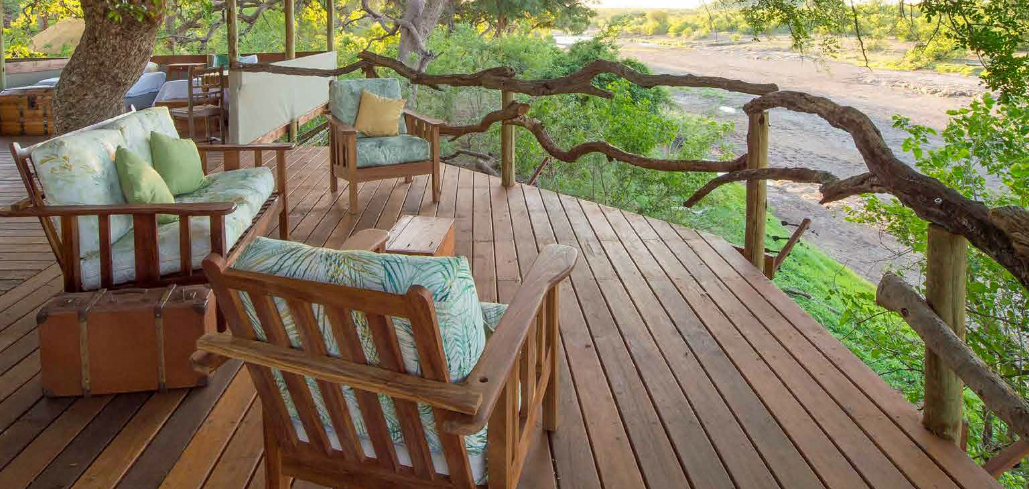
Version 3 nights in South Africa / 4 nights in Botswana:
Nights are indicative: they may change depending on the dates & availability.
Nights 1,2: Camp Davidson (South Africa) - Night 3: Lodge Bellevue (South Africa) - Nights 4,7: Tree camp (Botswana) - Nights 5,6: The Kgotla (Botswana) .
Camp Davidson - South Africa :
A re-creation of the original Camp Davidson has been built high in the bushveld above the Matlapeng valley. It offers the opportunity to explore on horseback from a secure base camp nestled in the heart of the wooded mountains and commands a wonderful panoramic view of the central highlands of the Waterberg range, while overlooking the picturesque Sunset Lake at the eastern boundary of the ranch property. Stay in decked canvas tents nestled amongst the sandstone ridges overlooking grassy valleys. Each luxury tent has an en-suite bathroom. The camp is completely run on solar energy and has a small swimming pool.

Bellevue Lodge - South Africa :
This luxury lodge is within a morning's ride from Camp Davidson and offers excellent riding and plenty of game. It is located on the south western side of the conservancy and is tastefully decorated lodge with 5 en-suite rooms. The lodge had a large comfortable living space and dining areas inside and outside.
There is a small pool and deck which overlooks a plain and watering hole close by, where wildlife can frequently be seen.
There are no Wi-Fi facilities at the lodge.

Two Mashatus Camp - Botswana :
Nestled in the shade of two large Mashatu trees, the heart of the camp has two traditionally built Lala Palm rondavels for dining and lounge areas.
Guest accommodation is in large A-frame walk-in tents set on teak platforms each with en-suite enviro drop toilet and hot water shower. Each tent is private and positioned in the shade of a tree in the bush, not far from the main area. Each tent has a small deck area in front where guests can relax privately during the afternoons.
Two Mashatus Camp also has a small swimming pool under a Mashatu tree for guests to enjoy.

Tree Camp - Botswana :
A very special camp. You sleep in huts perched 4 meters above the ground in a giant Mashatu. Cabanes for 2 airy and fresh people. Shared showers and toilets. The spacious dining room and living room overlook the Majale River. This camp will truly provide you with unforgettable memories.

Kgotla camp - Botswana :
This rustic camp, located in the western part of the Mashatu Game Reserve, along the Motloutse River, offers a truly unique setting. You will stay in individual tents, nestled beneath a large Mashatu tree, within a wooden enclosure. This camp is ideal for those who want to be close to nature: you can even hear the hyenas, lions, and elephants at night. A perfect stay for nature lovers!
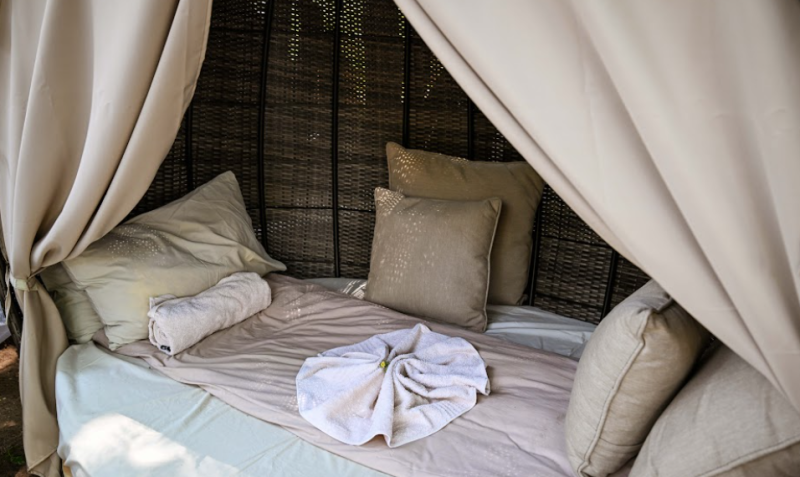
P
MEALS:
All meals are included from lunch on Day 1 to brunch on your last day. Two highly trained experienced bush chefs will look after your every need. Breakfast is buffet of cereals, toast, muffins, or porridge. Lunch is a buffet usually quiches, salads, fruits, and dessert. Dinner is a 3 course meal served to you at the table, often under the canopy of stars !
All water in the camp is filtered to the highest standards and is guaranteed perfectly safe for drinking. All drinks are included with your tour. We can cater to dietary restrictions if given prior notice.
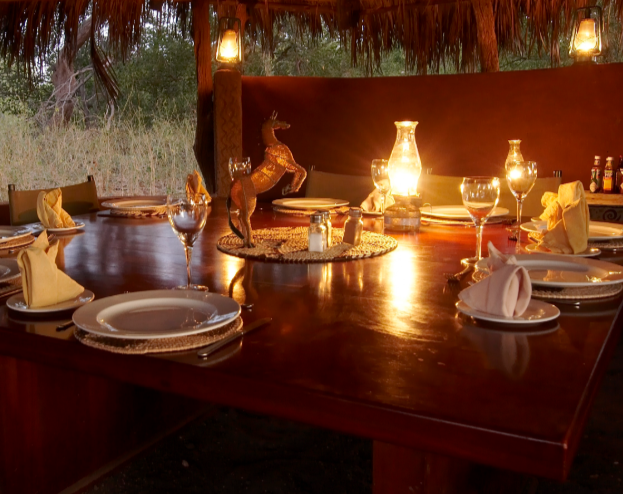
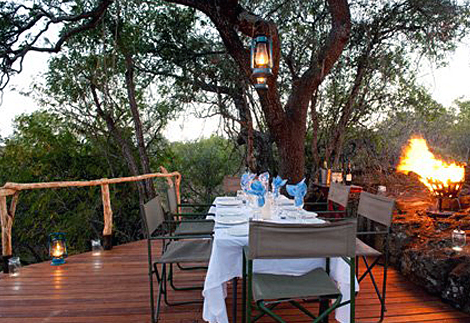
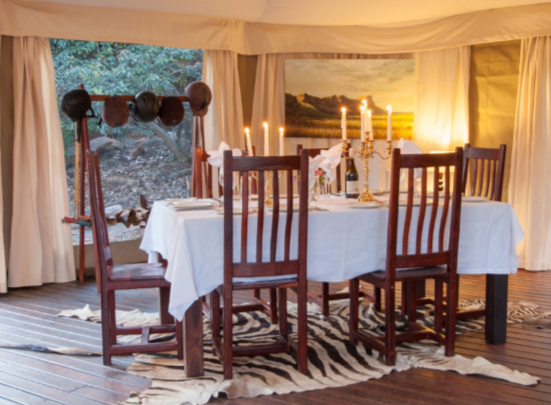
100 € discount for registrations received before 15/01 !
2026 PRICES / PER PERSON:
Version 4 nights in South Africa / 3 nights in Botswana:
02/01 until 29/01 & 04/12 until 04/01/2027 : 3990 € in 2 person tents
01/02 au 04/12: 4890 € in 2 person tents
Tax: 60 US$ per person, payable on site in cash or by card.
Booking fee: 15 €
* Prix pouvant être revus à la baisse ou à la hausse selon les variations du taux de change.
Options:
Tente de 1 personne: une tente peut être attribuée à une personne seule sans paiement de supplément, la tente sera strictement attribuée selon le principe du premier arrivé, premier servi. Une fois cette tente attribuée, un supplément de 50% est payable pour garantir une tente individuelle. Il n'y a pas de supplément si vous êtes prêt à partager.
Option safari en voiture "grands félins" du jour 7 si disponible: 65 $ / personne à payer sur place.
Version 3 nights in South Africa / 4 nights in Botswana:
01/01 until 03/02 & 03/12 until 31/12: 4650 € in 2 person tents
04/02 until 03/03: 4200 € in 2 person tents
04/03 until 03/12: 5700 € in 2 person tents
Tax: 60 US$ per person, payable on site in cash or by card.
Booking fee: 15 €
Options:
Single tent: A tent can be allocated to a single person without additional charge. Tents are strictly allocated on a first-come, first-served basis. Once allocated, a 50% surcharge is payable to guarantee a single tent. There is no surcharge if you are willing to share.
Optional "big cat" drive-through safari on day 7, if available: $65 per person, payable locally.
PRICES INCLUDE:
Horse and tack rental, local guides, accommodation, meals, drinks, road arrival transfer from Johannesburg airport, flight departure transfer to Johannesburg airport, South Africa to Botswana transfer during the safari, the financial guarantee of your payments by our deposit of travel operator.
PRICES DON'T INCLUDE:
Individual insurance, personal expenses, tips, local taxes ($30 to be paid locally), flights to/from Johannesburg, anything not indicated in "the price includes".
INSURANCE:
A civil liability and travel insurance (assistance/repatriation) is compulsory. A cancellation insurance is strongly recommended.
A payment by credit card can make you benefit from its possible insurance (check your contract).
We offer to Europe Union, Switzerland, Liechtenstein, Norway residents: the Chapka insurances.
Cap Security: full insurance with cancellation. Cap Cancellation: cancellation only.
See prices & information
FLIGHTS:
Flights to/from Johannesburg are not included because it is more interesting to book directly your ticket: a transport package included is generally more expensive with agency commissions. However, we are at your disposal to help you find the best prices or to offer you a flight included package on request.
100 € discount for registrations received before 15/01 !
Availability is indicative and may vary quickly: contact us to check the date you are interested in
100 € DISCOUNT TO BE DEDUCTED FOR REGISTRATIONS RECEIVED BEFORE 15/12 !
| Dates | From | Infos | Contact |
|---|---|---|---|
| - | 3990€ | 4 nights in South Africa / 3 nights in Botswana - SOLD OUT | Information request |
| - | 4650€ | 3 nights in South Africa / 4 nights in Botswana - SOLD OUT | Information request |
| - | 3990€ | 4 nights in South Africa / 3 nights in Botswana - SOLD OUT | Information request |
| - | 3990€ | 4 nights in South Africa / 3 nights in Botswana - SOLD OUT | Information request |
| - | 4650€ | 3 nights in South Africa / 4 nights in Botswana - SOLD OUT | Information request |
| - | 4890€ | 4 nights in South Africa / 3 nights in Botswana - AVAILABLE | Information request |
| - | 4890€ | 4 nights in South Africa / 3 nights in Botswana - AVAILABLE | Information request |
| - | 4200€ | 3 nights in South Africa / 4 nights in Botswana - LAST SPACES | Information request |
| - | 4890€ | 4 nights in South Africa / 3 nights in Botswana - LAST SPACE | Information request |
| - | 4890€ | 4 nights in South Africa / 3 nights in Botswana - AVAILABLE | Information request |
| - | 4200€ | 3 nights in South Africa / 4 nights in Botswana - AVAILABLE | Information request |
| - | 4890€ | 4 nights in South Africa / 3 nights in Botswana - LAST SPACES | Information request |
| - | 4890€ | 4 nights in South Africa / 3 nights in Botswana - AVAILABLE | Information request |
| - | 4890€ | 4 nights in South Africa / 3 nights in Botswana - AVAILABLE | Information request |
| - | 5700€ | 3 nights in South Africa / 4 nights in Botswana - SOLD OUT | Information request |
| - | 4890€ | 4 nights in South Africa / 3 nights in Botswana - LAST SPACES | Information request |
| - | 4890€ | 4 nights in South Africa / 3 nights in Botswana - SOLD OUT | Information request |
| - | 5700€ | 3 nights in South Africa / 4 nights in Botswana - 2 LAST SPACES | Information request |
| - | 4890€ | 4 nights in South Africa / 3 nights in Botswana - LAST SPACES | Information request |
| - | 4890€ | 4 nights in South Africa / 3 nights in Botswana - SOLD OUT | Information request |
| - | 4890€ | 4 nights in South Africa / 3 nights in Botswana - AVAILABLE | Information request |
| - | 5700€ | 3 nights in South Africa / 4 nights in Botswana - SOLD OUT | Information request |
| - | 4890€ | 4 nights in South Africa / 3 nights in Botswana - SOLD OUT | Information request |
| - | 4890€ | 4 nights in South Africa / 3 nights in Botswana - AVAILABLE | Information request |
| - | 5700€ | 3 nights in South Africa / 4 nights in Botswana - SOLD OUT | Information request |
| - | 4890€ | 4 nights in South Africa / 3 nights in Botswana - LAST SPACES | Information request |
| - | 5700€ | 3 nights in South Africa / 4 nights in Botswana - LAST SPACES | Information request |
| - | 4890€ | 4 nights in South Africa / 3 nights in Botswana - LAST SPACES | Information request |
| - | 4890€ | 4 nights in South Africa / 3 nights in Botswana - LAST SPACES | Information request |
| - | 5700€ | 3 nights in South Africa / 4 nights in Botswana - AVAILABLE | Information request |
| - | 4890€ | 4 nights in South Africa / 3 nights in Botswana - LAST SPACES | Information request |
| - | 4890€ | 4 nights in South Africa / 3 nights in Botswana - LAST SPACES | Information request |
| - | 5700€ | 3 nights in South Africa / 4 nights in Botswana - LAST SPACES | Information request |
| - | 4890€ | 4 nights in South Africa / 3 nights in Botswana - LAST SPACES | Information request |
| - | 4890€ | 4 nights in South Africa / 3 nights in Botswana - LAST SPACES | Information request |
| - | 5700€ | 3 nights in South Africa / 4 nights in Botswana - SOLD OUT | Information request |
| - | 4890€ | 4 nights in South Africa / 3 nights in Botswana - LAST SPACE | Information request |
| - | 4890€ | 4 nights in South Africa / 3 nights in Botswana - LAST SPACE | Information request |
| - | 5700€ | 3 nights in South Africa / 4 nights in Botswana - LAST SPACES | Information request |
| - | 4890€ | 4 nights in South Africa / 3 nights in Botswana - AVAILABLE | Information request |
| - | 4890€ | 4 nights in South Africa / 3 nights in Botswana - LAST SPACES | Information request |
| - | 5700€ | 3 nights in South Africa / 4 nights in Botswana - 2 LAST SPACES | Information request |
| - | 4890€ | 4 nights in South Africa / 3 nights in Botswana - LAST SPACES | Information request |
| - | 4890€ | 4 nights in South Africa / 3 nights in Botswana - LAST SPACES | Information request |
| - | 5700€ | 3 nights in South Africa / 4 nights in Botswana - SOLD OUT | Information request |
| - | 4890€ | 4 nights in South Africa / 3 nights in Botswana - SOLD OUT | Information request |
| - | 4890€ | 4 nights in South Africa / 3 nights in Botswana - LAST SPACES | Information request |
| - | 5700€ | 3 nights in South Africa / 4 nights in Botswana - LAST SPACES | Information request |
| - | 4890€ | 4 nights in South Africa / 3 nights in Botswana - LAST SPACES | Information request |
| - | 4890€ | 4 nights in South Africa / 3 nights in Botswana - SOLD OUT | Information request |
| - | 5700€ | 3 nights in South Africa / 4 nights in Botswana - 2 LAST SPACES | Information request |
| - | 4890€ | 4 nights in South Africa / 3 nights in Botswana - 2 LAST SPACES | Information request |
| - | 4890€ | 4 nights in South Africa / 3 nights in Botswana - 2 LAST SPACES | Information request |
| - | 5700€ | 3 nights in South Africa / 4 nights in Botswana - LAST SPACES | Information request |
| - | 4890€ | 4 nights in South Africa / 3 nights in Botswana - 2 LAST SPACES | Information request |
| - | 4890€ | 4 nights in South Africa / 3 nights in Botswana - SOLD OUT | Information request |
| - | 5700€ | 3 nights in South Africa / 4 nights in Botswana - LAST SPACES | Information request |
| - | 4890€ | 4 nights in South Africa / 3 nights in Botswana - LAST SPACES | Information request |
| - | 4890€ | 4 nights in South Africa / 3 nights in Botswana - AVAILABLE | Information request |
| - | 5700€ | 3 nights in South Africa / 4 nights in Botswana - AVAILABLE | Information request |
| - | 4890€ | 4 nights in South Africa / 3 nights in Botswana - LAST SPACES | Information request |
| - | 4890€ | 4 nights in South Africa / 3 nights in Botswana - SOLD OUT | Information request |
| - | 5700€ | 3 nights in South Africa / 4 nights in Botswana - LAST SPACES | Information request |
| - | 4890€ | 4 nights in South Africa / 3 nights in Botswana - LAST SPACES | Information request |
| - | 4890€ | 4 nights in South Africa / 3 nights in Botswana - AVAILABLE | Information request |
| - | 5700€ | 3 nights in South Africa / 4 nights in Botswana - LAST SPACES | Information request |
| - | 4890€ | 4 nights in South Africa / 3 nights in Botswana - AVAILABLE | Information request |
| - | 4890€ | 4 nights in South Africa / 3 nights in Botswana - AVAILABLE | Information request |
| - | 5700€ | 3 nights in South Africa / 4 nights in Botswana - LAST SPACES | Information request |
| - | 4890€ | 4 nights in South Africa / 3 nights in Botswana - AVAILABLE | Information request |
| - | 4890€ | 4 nights in South Africa / 3 nights in Botswana - LAST SPACES | Information request |
| - | 4650€ | 3 nights in South Africa / 4 nights in Botswana - LAST SPACE | Information request |
| - | 3990€ | 4 nights in South Africa / 3 nights in Botswana - LAST SPACES | Information request |
| - | 3990€ | 4 nights in South Africa / 3 nights in Botswana - AVAILABLE | Information request |
| - | 4650€ | 3 nights in South Africa / 4 nights in Botswana - AVAILABLE | Information request |
| - | 3990€ | 4 nights in South Africa / 3 nights in Botswana - LAST SPACES | Information request |
CLIMATE:
Month | Jan | Feb | Mar | Apr | May | Jun | Jul | Aug | Sep | Oct | Nov | Dec |
Average High Temperature (°F) | 84 | 84 | 82 | 79 | 75 | 70 | 70 | 75 | 80 | 82 | 83 | 84 |
Average Low Temperature (°F) | 63 | 62 | 60 | 54 | 47 | 41 | 41 | 45 | 51 | 56 | 59 | 62 |
Average High Temperature (°C) | 29 | 29 | 28 | 26 | 24 | 21 | 21 | 24 | 27 | 28 | 28 | 29 |
Average Low Temperature (°C) | 17 | 17 | 16 | 12 | 8 | 5 | 5 | 7 | 11 | 13 | 15 | 17 |
Average Precipitation (days of rain) | 10 | 8 | 8 | 6 | 1 | 0 | 0 | 0 | 1 | 6 | 10 | 11 |
SEASONS:
The climate over most of Southern Africa is temperate. Hot, dry conditions are usually encountered in the Tuli region. Heavy summer thunderstorms of short duration in the late afternoon and evening may be experienced. Rainfall occurs mostly during the summer months (October - March).
Summer (December to February):
The temperatures are high and there is a lot of humidity in the air. The chances of convectional thunderstorms are great. Some of the summer migrant birds begin to arrive. The characteristic call of the Red-chested Cuckoo rings out clearly, heralding the approach of better times for all. Once good rains have fallen, the small, drab, but extremely vocal Monotonous Lark keeps the bush awake day and night with its irritating call, as they perch on every treetop.
Kudus calve and there is a good chance of seeing late Impala lambs, tottering along on spindly, wobbling legs behind their mothers. Due to the heat, the animals wisely begin to seek shade before 8 o’clock in the morning, only becoming active again in the late afternoon, just prior to sunset. Tropical thunderstorms are a regular afternoon feature and there is a high probability of flooded rivers to add some excitement to game drives.
Autumn (March to May):
The transition from summer to winter occurs rapidly in the Limpopo Valley. Finally the searing heat of summer begins to abate and there is less likelihood of rain. This is a truly splendid time of the year. It is now Autumn and the daily temperatures are most pleasant with balmy days and nights. Temperatures begin to drop rapidly after sunset and both evening and morning game drives require warmer clothing. Although chilly in the morning, the days are clear and pleasant with crisp blue skies. Now that the rains are over, the veldt begins to dry out and game begins to congregate around the major watercourses, such as the Limpopo and associated wetlands, as well as the artificial waterholes scattered throughout the reserve.
A few late Kudu calves may make a bemused appearance in the beginning of March. Large nursery herds of gawky Impala young are found, kept under some control by the watchful eyes of their mothers.
The bush is still dense, but the bright shades of green are starting to become duller as the year progresses. As the vegetation begins to thin, the elusive leopard is more frequently seen. Lions, which dispersed with the game during the wet season, now begin to concentrate their activities in the central area of Mashatu.
Winter (June to August):
Winter is now upon us and has spread its chilly grip on Mashatu. The days are still good, with crisp mornings. The nights can be very cold.
Most of the natural pans and pools have now completely dried up. Elephant and a host of other species begin to frequent the artificial waterholes at both Main and Tent Camps, which makes for exciting mealtime viewing. Predator sightings are good at this time of the year, due to the thinned out vegetation and concentrations of game, cheetah however are scarce. In general the game is more active later into the day.
This is also a favorable time to visit the archaeological site at the Motloutse River. The summer vegetation has disappeared and a host of interesting features are now visible.
Towards the end of winter, the floodplains and grasslands adjacent to the Limpopo are very dry and barren. The bush has become harsh and almost inhospitable, with absolutely no groundcover, only dust and rocks visible for kilometers. The veldt has all the typical winter hues of brown and red, as the Mopane leaves start turning. The weather is fine with temperatures increasing slightly. The early mornings and evenings being not as cold as in June or July. August is a showy month, with respect to sunsets. Due to the very dry conditions, large quantities of dust is taken up into the air, giving rise to spectacular pyrotechnic displays as the sun sinks below the horizon.
Spring (September to November):
The bush is still very dry, a condition exacerbated by winds, which blow from August through to October. Temperatures begin to steadily increase and conditions are becoming desperate for many of the herbivores. This is due to sub region frontal systems touching on the Limpopo Valley, bringing superheated air into the region. There may be an occasional tropical thunderstorm, but this early rain is sucked up like a sponge by the barren earth. This welcome water is however not enough, and seldom results in a notable floral display. Many trees begin to blossom, in anticipation of the rapidly approaching summer. The vibrant hues of the blossoms enliven the bush, providing a bountiful treat for baboons and other hungry inhabitants of the bush, all of whom have struggled through the lean winter months. Temperatures begin to creep upwards and game drives are once again early morning and late afternoon affairs, as a wise means of avoiding the debilitating midday heat.
Predators have a field day, as many of the game are weak and tend to restrict their activities to the area close to the waterholes. The lack of dense vegetation and the dry powdery soil make tracking lion and leopard an easier task and often result in exceptional sightings. Elephant listlessly wait out the dry season, moving from waterhole to waterhole, where they take full advantage, wallowing and drinking for hours. They will feed on the surrounding vegetation, moving into the bush on feeding forays when temperatures have dropped sufficiently for them to forage out of the protective shade. It is also at this time that eland begin to calve.
My daughter and I have been back from our safari for a week now.
It was absolutely fabulous. Nothing to complain about. Perfectly organized, everyone attentive at all times, and every day offering new surprises...
In short, we thoroughly enjoyed this trip !
The care from arrival to the return to the airport was perfect, especially important for me since I was stressed about being in a country where insecurity reigns.
The guides were great and attentive at all times.
Perfect horses:
My horses, Rif Raf and Prisma, were perfectly suited to the type of horse I had wanted: they moved well, were sure-footed, and fearless. We do a lot of galloping, especially in South Africa, but the horses are used to it and have great endurance; it's very pleasant.
Accommodation: It's incredible that they can offer such comfortable accommodation in the middle of the bush! Especially Tree Camp, a real dream! We were also lucky enough to be able to stay one night at Savannah Lodge, which was available, and that was true luxury (midweek, it's perfect for washing and drying your hair!). But above all, the view is fabulous, with the animals coming right in front of the terrace!
I only think of one thing: going back!!
Everything was perfect: welcome, horse riding, accommodation, Cap Rando services.
It was truly an exceptional trip (and I’m starting to have done many 😊)
My horse was very good, such as the tack. Safety: Excellent, I felt very safe during the whole trip.
Accommodation: Excellent, very satisfied, love the experience of staying close to the nature in comfortable tree-house and tents. Camps and lodges where very comfortable and clean. Food was fantastic ! Love the vegetarian dishes very much. All staff was very helpful and service minded.
Cap Rando services were excellent, very helpful and quick to respond.
I truly recommend the African Explorer horseback safari in Botswana and South Africa. Riding in the wildlife is a fantastic experience and I did feel very safe all the time.
Everything was perfect ! Advice and efficiency from Cap Rando. In the confirmation file. No worries preparing for my trip. And once there: perfect safari! A great change of scenery. Welcome, comfort and superb safari !
Absolutely spectacular safari and fantastic horse riding ! We were fortunate to have a group of excellent riders and were treated to endless winding gallops. Being able to travel around Botswana and jump from fallen trees has spoiled us forever. The gallops were long but regular and well balanced with walking in the heat.
Horses are wonderful, courageous as can be, responsive and happy in their work. The evaluation in Botswana was very pleasant and allowed the horses to be adjusted to the desired level.
The guides were wonderful and knowledgeable and we saw a lot more wildlife than expected, both in the saddle and out. By the end of the trip, it felt like a (very adventurous) outing with good friends. It was truly a once in a lifetime experience. We are already planning to go back !!
Food and accommodations were great. The only small thing is that the showers in South Africa were a bit cold - But I guess that was to be expected going into their winter. The Treehouse Camp in Botswana was beautiful.

